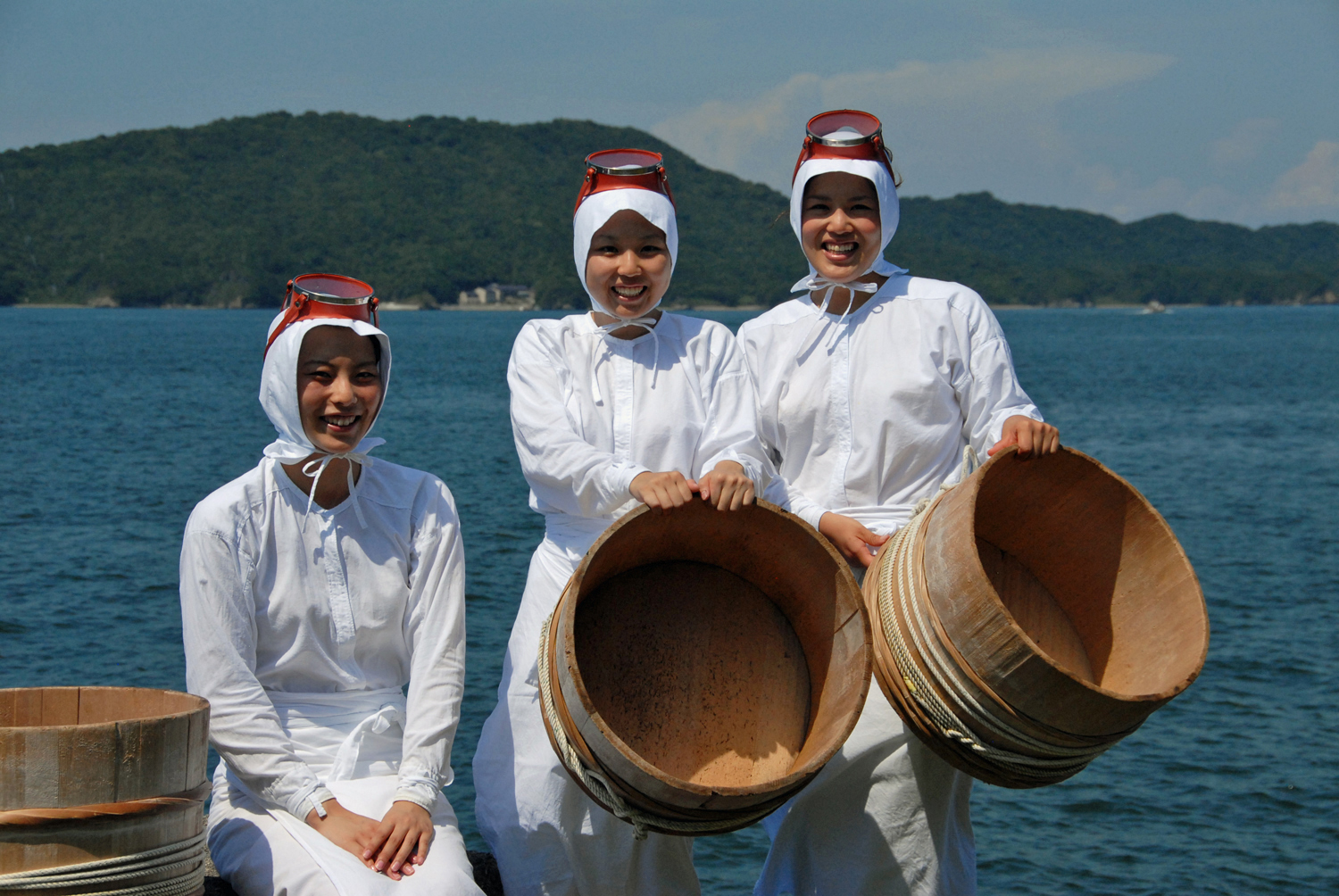Ama, or female divers, make their living diving to the bottom of the sea in search of seaweed and shellfish such as abalone and clams. They now exist only in limited areas; Mie, Iwate and Ishikawa and other prefectures. The cities of Shima and Toba in Mie Prefecture have the largest number of ama in the country. Approximately 1,000 ama are active in those cities, and it is estimated that they represent about half of all ama in Japan.
There are a few men doing the same work, but the number of women engaged in it is far larger, so in general, it is recognized as a profession for women. The reason for this wide gender gap is because women can retain body heat better in the cold sea due to having more subcutaneous fat than men. It is said that because they only wore a loincloth in the past, even during the winter, maintaining body heat was a matter of life and death. Ama first swim to the spot where they hope to find their catch, then dive deep to the sea bottom to look for it. They spend about a minute underwater on each dive, and dive between 50 and 100 times. Their safety is heavily influenced by the weather and sea conditions, meaning they have to work hand in hand with nature and making the work a rather dangerous profession.
Traditional ama fishing in the cities of Shima and Toba was designated as an Intangible Folk Cultural Property of Mie Prefecture in 2014 — the first time for ama to receive such designation. In a report of the Council for the Protection of Cultural Properties, passing the skills to identify the sea bottom terrain and fishing grounds down throughout the history of ama fishing without substantial change and voluntarily playing a role in resource management by limiting catches, were noted as being highly evaluated points.


















With your current subscription plan you can comment on stories. However, before writing your first comment, please create a display name in the Profile section of your subscriber account page.